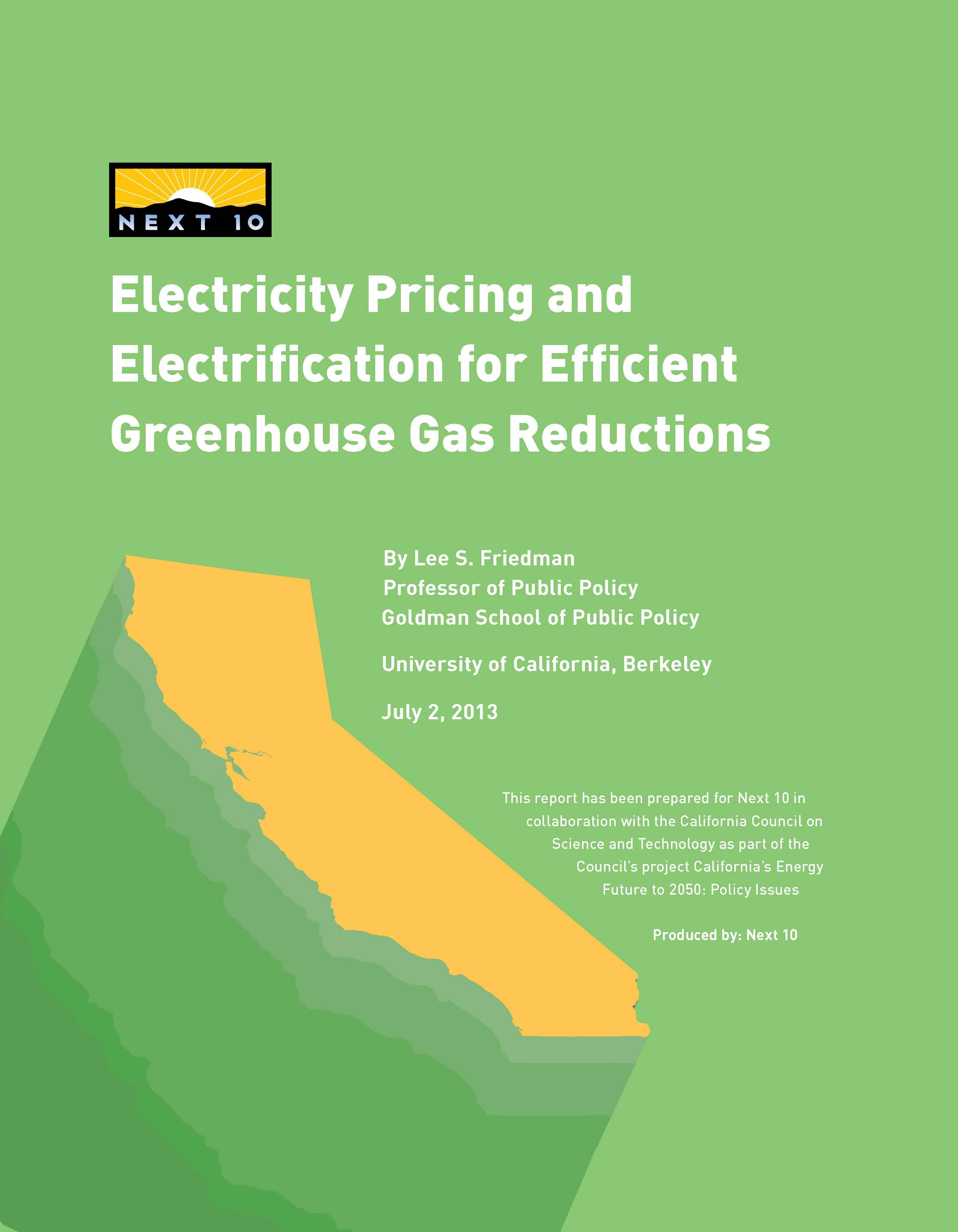Publications
Electricity Pricing and Electrification for Efficient Greenhouse Gas Reductions
As California proceeds toward its long-run 2050 goal for permitted greenhouse gas (GHG) emissions, it will be necessary for electricity to become more decarbonized. It will also be necessary for some activities that are now fossil-fueled to run partially or fully on the cleaner electricity—a process referred to as electrification. Improved pricing policies are necessary to make decarbonization and electrification decisions effectively and efficiently.
The study finds that inefficient electricity pricing policy not only distorts market signals to consumers, it also acts as a substantial barrier to vehicle electrification, as well as the development of smart grid programs and various types of electricity storage facilities that would support the stateʼs renewable generation sources.
Current rate structures make vehicle charging in California six-to-eight times more expensive than it should be, concludes the report. Many residential electricity customers pay in excess of $.30 per kWh at night even though the marginal cost of providing night electricity is much closer to $.05 per kWh. Additional benefits are created through a more efficient market with time-varying rates, as such a system encourages electricity customers to curb their electricity consumption during times of high demand.
The study concludes that unless additional policy action is taken, California's GHG reductions will be lower than they could be and more expensive than necessary. In order to meet the state's 2050 goals, the following should be considered:
- Linking Californiaʼs carbon market with other jurisdictions that have comparable emission reduction goals and programs, like the linkage expected with Quebec.
- Such linkages would create new possibilities for reducing GHG emissions and cut the cost of emission reductions.
- Creating more policy certainty around the stateʼs emissions goals for the decade following 2020.
- This is needed soon to help drive long-term infrastructure investments and research and development efforts aimed at developing the stateʼs low carbon future.
- Given that some studies show existing methods alone are not enough to achieve long-run emission reduction targets, technology innovation is key to meeting the stateʼs longer-term goals.
- The study concludes that greater policy certainty post 2020 could come in the form of something as simple, for example, as a 2030 target for emissions reductions.
- Electricity providers are currently prohibited from giving any GHG price signal to the 10 million households served by the stateʼs investor-owned utilities.
- This creates a market distortion that hinders consumers from naturally conserving energy to reduce their energy—policymakers should look at these distortions and consider strategies to prevent them.
- One promising strategy under consideration at the California Public Utilities Commission is to allow the carbon price signal but offset the effects on bills with periodic dividends to electricity customers.
- Transitioning electricity customers to a time-varying rate system that reflects the true cost difference between using electricity during peak and non-peak demand hours.
